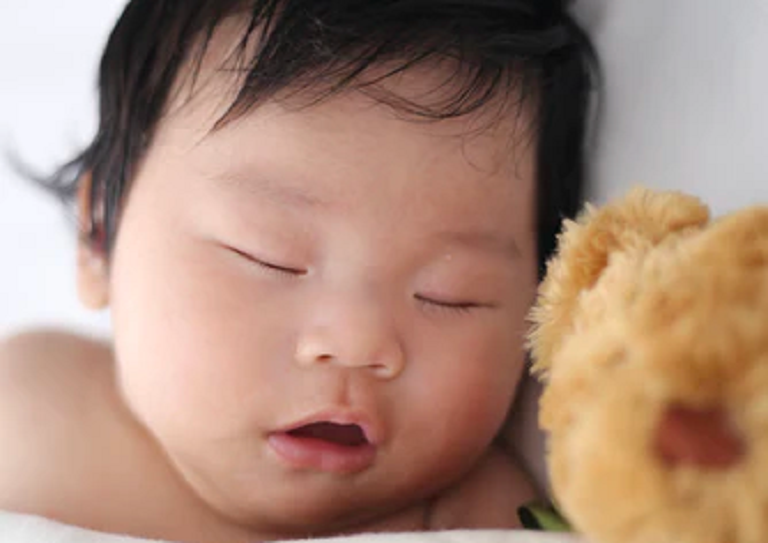Blog
Why your Child's Mouth-Breathing Habit SHOULD Worry you

Recent Posts
- Transforming Gum Health: Laser Treatment For Gum Disease at DP Dental
- Enhancing Smiles with OneSmile Clear Aligners at DP Dental
- Clear Aligners vs. Braces: Choosing the Right Orthodontic Treatment
- Non-CPAP Sleep Apnea & Snoring Solutions For Better Sleep
- Dental Restoration: Exploring Dental Inlays, Onlays, and Crowns
There’s something remarkably peaceful about our little ones so deep in slumber that we parents can’t help but stare adoringly at them. It just happens that while gazing at their sleeping child is when many parents discover that their child is, in fact, a mouth breather.
Perhaps you’ve wondered if there’s more to those soft snores that escape your child’s slightly opened mouth? According to the Clinical Director at DP Dental, Dr Yue Weng Cheu, even the slightest mouth opening when sleeping, could indicate that a child is a mouth breather.
Although seeing a baby fast asleep with their mouth open is quite commonplace, it is not how nature intended it.
Dr Yue: All of us are born with our mouths closed, breathing through the nose. If we deviate from there anytime during our lifetime, this is a sign to be concerned.
Yes, while an open mouth while sleeping is the most obvious sign, Dr Yue says it’s not the only sign of mouth breathing. There are many signs parents can look out for that could indicate this condition.
It is also crucial to understand the importance of spotting those signs early as they could manifest into more significant health issues later-on. Here are some adverse effects and signs and symptoms of mouth breathing.
Sleep Disorders
Dr Yue: Mouth breathing is one of the leading causes of sleep disorders in children. The natural position of the tongue is supposed to be at the roof of the mouth. When sleeping at night, a mouth breathing tendency causes the tongue to drop back rather significantly, increasing the tendency for airway obstruction.
According to Dr Yue, the very act of not closing the mouth creates the opportunity for the tongue to not be in contact with the roof of the mouth, making it an obstruction to the airway. What happens naturally as a result is that the child (or adult) would have to compensate accordingly by opening their mouth to breathe. Dr Yue points out that airway obstruction could even create cranial-facial deformities, including dental deformities.
“When mouth breathing, we tend not to breathe optimally, causing issues like snoring, upper airway resistance syndrome and apnea. When oxygen levels are low to the brain and other organs, the body becomes very anxious because of this air deficiency. Air deficiency usually can manifest as symptoms similar to ones displayed in kids with attention deficit hyperactivity disorder (ADHD).”
Tooth Decay, Stains and Oral Health Issues
Dr Yue: Our mouth, just like any other cavity in the body, needs to be moist all the time. “When a child breathes through their mouth, it makes the mouth dry. Without the buffering, antibacterial effect of saliva to protect and coat the surface of the teeth, decay can happen due to fermentation of substances, tooth surfaces or in crevices.
With this drying effect, the bacterial load on the gums increase, and this promotes more gum issues, especially in areas where the plaque accumulates.
With this drying effect, the bacterial load on the gums increase, and this promotes more gum issues, especially in areas where the plaque accumulates.
If parents observe their kids front teeth to be stained, this could indicate mouth breathing. Take a good look into your child’s mouth, and you may even notice other signs such as red, inflamed or even bleeding gums.
“Some may even develop bad breath. Because when the mouth is dry, fermentation of bacteria happens and sulphites are released. This fermentation can induce bad breath.”
Posture Issues
Dr Yue: When the tongue blocks their airway, a child tends to stand hunching their back. Notice if your child has a posture where their head is leaning forward, and their shoulders are hunched. A child may do this to compensate for the lack of oxygen. The oxygen level in the blood can drop as they are not breathing optimally.
Habit Formation
you know that mouth breathing could happen even during the day? If sleep mouth breathing is ignored, the practice of mouth breathing becomes next to nature, and it can happen even when you’re awake during the day.
Dr Yue: It is very hard to change the habit all of a sudden. Mouth breathing during the day could cause one to have their tongue at the base of the mouth. This tongue position blocks the airway. Therefore the child will have to compensate by changing their posture by sticking their head up or out a little to open the space at the back of the throat to breathe easily.
Other Symptoms to look out for – Dark Circles and Nasal Congestion
“No matter how small the mouth opening is, even if it is hardly observable or a gaping open mouth, they’re all considered to be open posture.”
Dark circles in kids aren’t a common occurrence, and the appearance of these may indicate that your child isn’t sleeping well. Other issues, such as constant nasal congestion may also show mouth breathing.
Simple Habit Correction
Now, as much as it is good to be aware of the symptoms, knowing what to do next is imperative. While seeing a trained doctor is the first step, surprisingly, Dr Yue stresses that part of the “treatment” is inculcating simple good habits!
Dr Yue: The window to train kids to develop good habits is very narrow, and parents need to start early. It is not easy to teach these habits, but that doesn’t mean we don’t start. First things first, parents can be role models by breathing through their own noses!
“Remember this mantra – tongue up, lips closed, breathe through the nose.”
Start with these two simple tips at home:
- The proper breathing technique: tongue up, lips closed, breathe through the nose.
- That age-old adage – close your mouth when chewing food.
When should you bring your child to see a doctor?
With this drying effect, the bacterial load on the gums increase, and this promotes more gum issues, especially in areas where the plaque accumulates.
Parents might be interested to know how something like mouth breathing is diagnosed, and well, how can it be treated apart from habit correction.
Dr Yue: When a little one comes in, we start by discreetly observing their normal breathing. With that, we take special note of the child’s ‘rest position’. Meaning, if they are breathing through the mouth, or through the nose? Also, after they talk, do they close their mouth immediately, or they continue to open their mouth to breathe through the mouth?
“We have to train kids to breathe through the nose during the day. Train them to close the mouth, keep the tongue up and breathe through the nose. This practice will ensure a better tongue position at night.”
In addition to thorough and detailed observation, a trained doctor will also go through the child’s history. They will discuss many aspects of the child’s sleeping patterns and daytime activities to be able to diagnose how mild or severe the condition is.
We hope this article was helpful to you to determine if your child is a mouth breather. If you suspect they are indeed a mouth breather, please don’t hesitate to make an appointment with Dr Yue Weng Cheu or Dr. Loh Ee Tyug at your earliest convenience.
Dr Loh Ee Tyug received her Bachelor of Dental Surgery from National University of Singapore in 2001 where she received numerous awards, including the FAC Ohlers Award for the Best Clinical Student.





